12 Mind-Blowing Facts About Florida’s Beaches
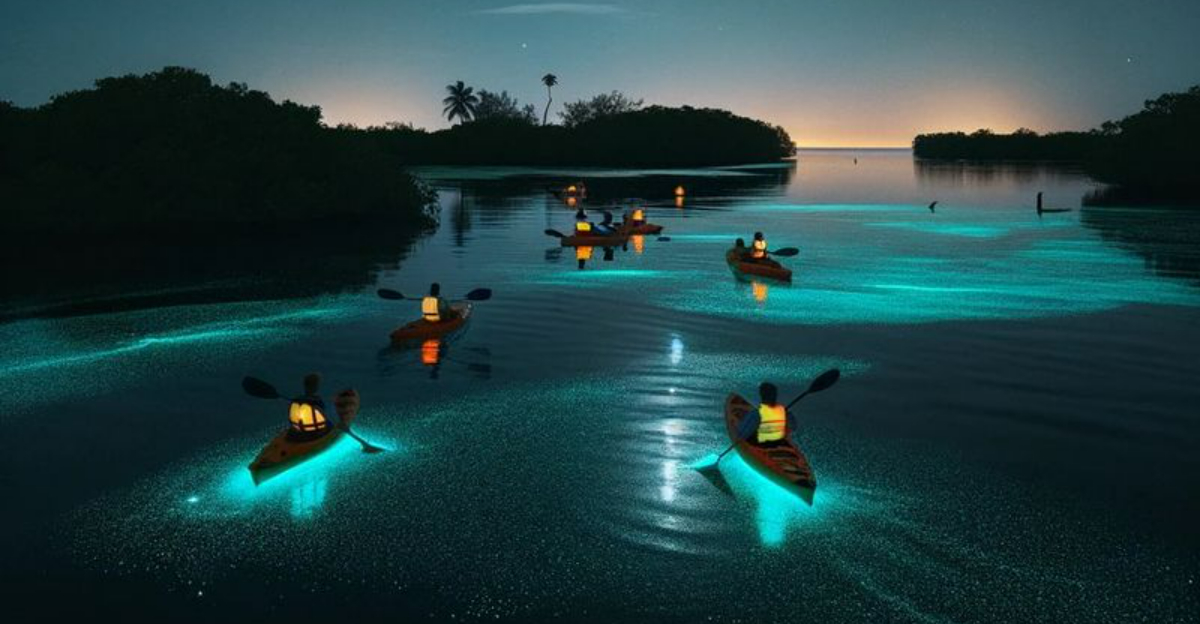
Florida’s coastline stretches over 1,300 miles, creating a paradise of beaches that draw millions of visitors each year. These sandy shores aren’t just pretty places to sunbathe – they hide fascinating secrets and natural wonders that most people never discover.
From mysterious natural phenomena to surprising wildlife encounters, Florida’s beaches have stories to tell that will leave you amazed.
1. Singing Sands That Make Music
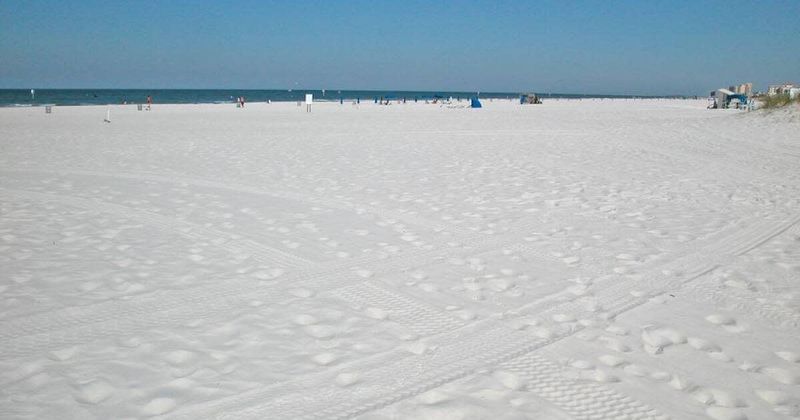
Ever walked along a beach and heard squeaking sounds under your feet? Some Florida beaches, particularly around the Panhandle, contain quartz sand that actually produces musical notes when you walk on it. The perfectly rounded grains rub against each other, creating what scientists call ‘acoustic sand.’
The drier the sand, the louder the symphony beneath your toes. This rare phenomenon only occurs on beaches with specific mineral compositions and grain sizes. Next time you’re strolling along Florida’s Gulf Coast, listen carefully for nature’s hidden soundtrack.
2. Pink Sand Beaches Exist in Florida
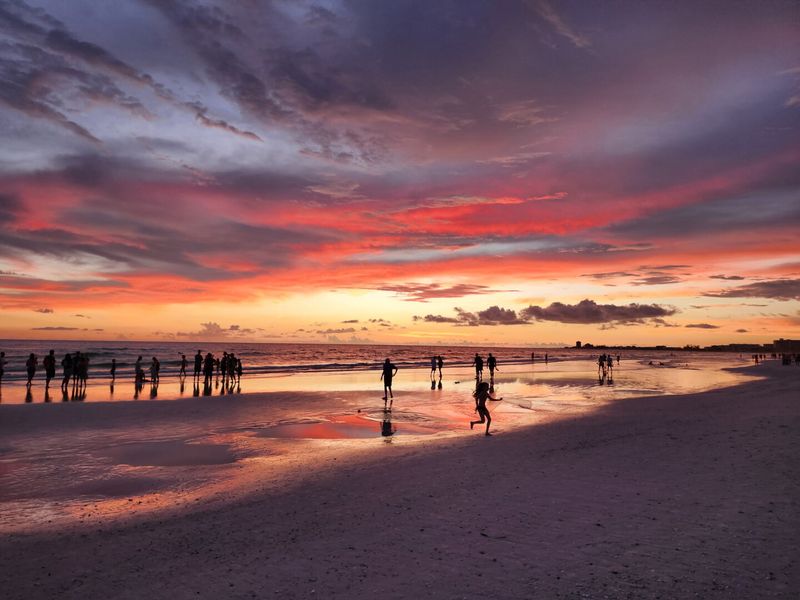
While white sand beaches dominate Florida’s coastline, there are rare spots where the sand takes on a rosy hue. These pink beaches get their color from crushed red shells of foraminifera, tiny marine organisms that live in coral reefs.
The most famous pink sand can be spotted at certain times on Crescent Beach on Siesta Key. The pink coloration varies throughout the year based on tides and currents. If you’re lucky enough to visit during a pink phase, you’ll see why photographers flock to capture this natural wonder that rivals the famous pink beaches of Bermuda.
3. Beaches Where You Can Find Prehistoric Shark Teeth
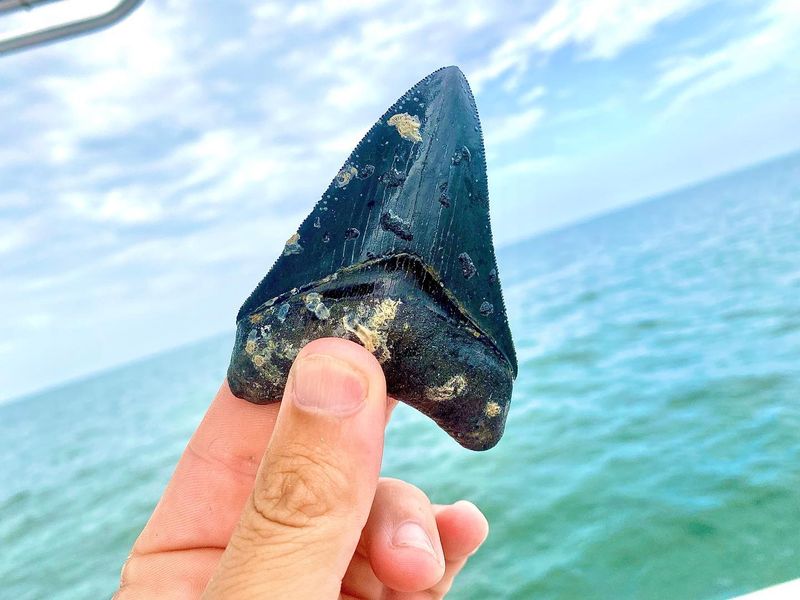
Florida was once completely underwater, and evidence of its ancient marine past washes up daily. Venice Beach, nicknamed the “Shark Tooth Capital of the World,” offers visitors an incredible chance to collect fossilized shark teeth that are millions of years old.
The dark, triangular teeth come from extinct megalodon sharks and other species that roamed prehistoric seas. After storms, the teeth become more plentiful as waves churn up the seafloor. Armed with a simple sifting tool, you can easily find dozens of these ancient treasures in just one afternoon.
4. Sand That Never Gets Hot

If you’ve danced across scorching hot sand at most beaches, Siesta Key will blow your mind. The sand here is 99% pure quartz, giving it a powder-like texture that stays cool to the touch even on the hottest summer days.
This unique composition reflects heat rather than absorbing it. Scientists say the rounded quartz grains create tiny air pockets that insulate against heat transfer. That’s why Siesta Key Beach consistently ranks among America’s top beaches – you can walk barefoot at high noon in July without burning your feet!
5. Underwater Beaches for Scuba Divers
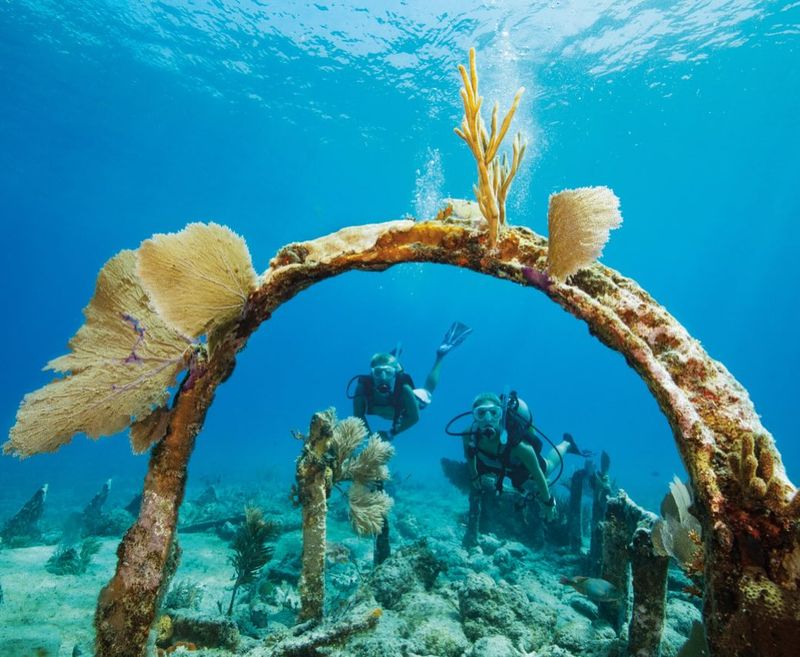
Hidden beneath Florida’s waves lie submerged ancient beaches that formed during the last ice age when sea levels were much lower. These underwater shorelines, complete with preserved dunes and beach ridges, now serve as artificial reefs teeming with marine life.
Off Jupiter and West Palm Beach, divers can explore these prehistoric beaches 60-70 feet below the surface. Marine archaeologists have even found ancient campfire sites and tools from early humans who once lived on these now-submerged lands. It’s like swimming through a time capsule of Florida’s distant past.
6. Beaches That Glow in the Dark

During certain summer months, some Florida beaches put on a magical light show. Bioluminescent microorganisms called dinoflagellates wash ashore and illuminate the water with an ethereal blue glow when disturbed. The effect transforms ordinary waves into something from a fantasy world.
The best viewing spots include Mosquito Lagoon and Indian River Lagoon on the east coast. Many kayak tours operate during peak bioluminescence season (June through October). Your paddle strokes will create trails of glowing blue light, making you feel like you’re paddling through stars.
7. Beaches Where Sea Turtles Outnumber People
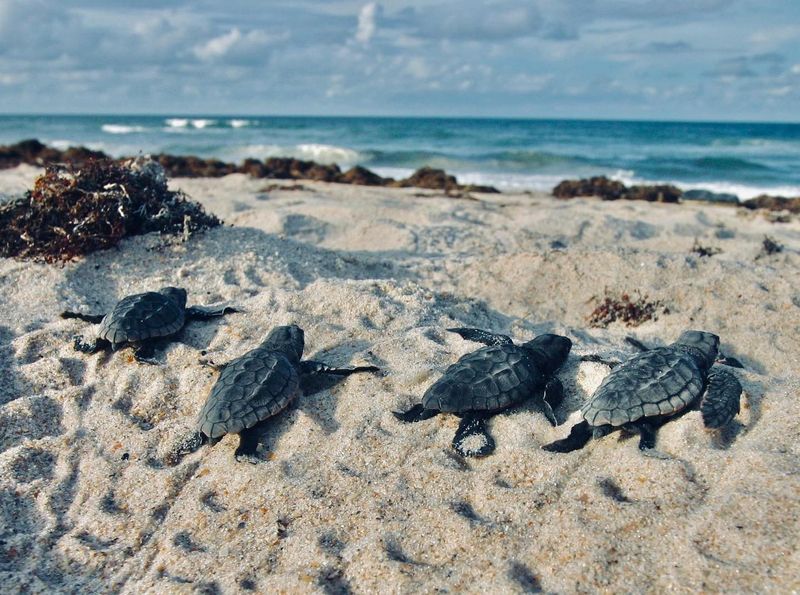
Florida hosts one of the world’s largest sea turtle nesting concentrations, with some beaches seeing thousands of nests in a single season. Melbourne Beach along the Space Coast holds the distinction of being the most important loggerhead turtle nesting site in the Western Hemisphere.
During summer nesting months, these beaches become critical wildlife zones. On guided night walks, you might witness massive 300-pound loggerheads laboriously digging nests and laying eggs. The hatchling emergence, when tiny turtles scramble toward the ocean by moonlight, ranks among nature’s most heartwarming spectacles.
8. A Beach Made Entirely of Shells
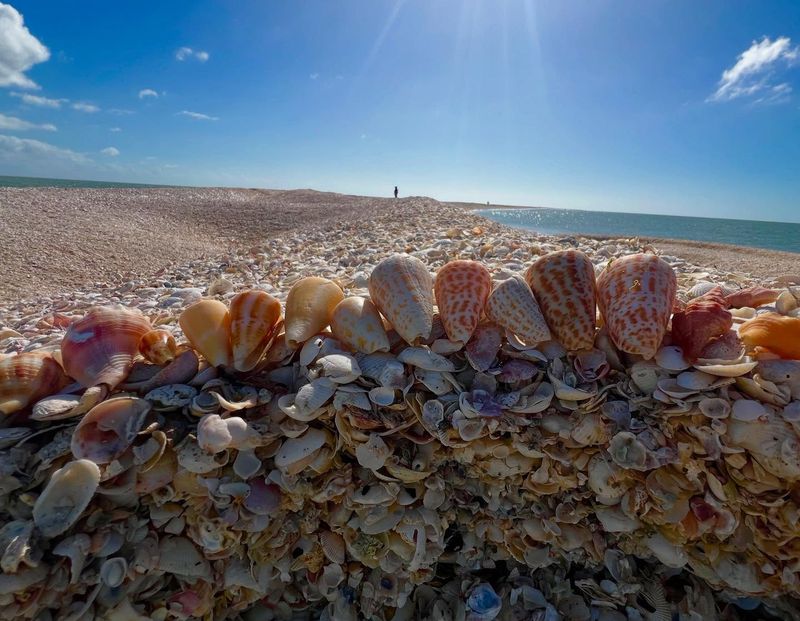
Most beaches have a few shells scattered about, but Sanibel Island turned this concept upside-down. Here, entire beaches consist almost exclusively of shells—millions upon millions of them—creating a natural treasure trove for collectors.
The island’s east-west orientation acts like a shell scoop in the Gulf of Mexico. After storms, the shell layer can be two feet deep! Over 400 species wash ashore, including rare junonia shells that make headline news when found. Locals even have a name for the hunched posture of shell collectors: the “Sanibel Stoop.”
9. Beaches With Hidden Spanish Treasure
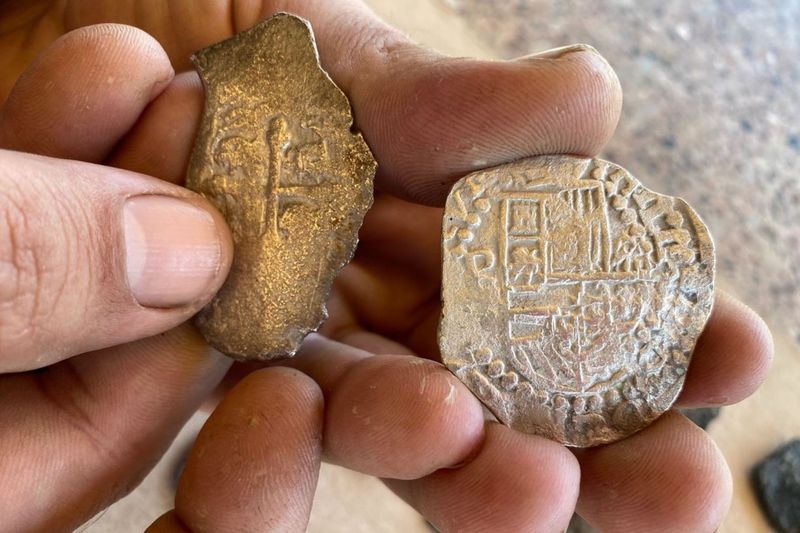
Florida’s east coast earned the nickname “Treasure Coast” for good reason. Spanish galleons loaded with gold and silver sank during hurricanes in the 1700s, and their bounty still washes ashore today, especially after storms.
Metal detector enthusiasts regularly find Spanish reales (coins) on beaches between Sebastian and Stuart. In 2015, a family discovered $1 million in gold coins and artifacts just 150 yards offshore. Florida law allows beachcombers to keep treasures found on public beaches, making these shores the perfect place for modern-day treasure hunters.
10. Beaches Where Cars Are Allowed to Drive
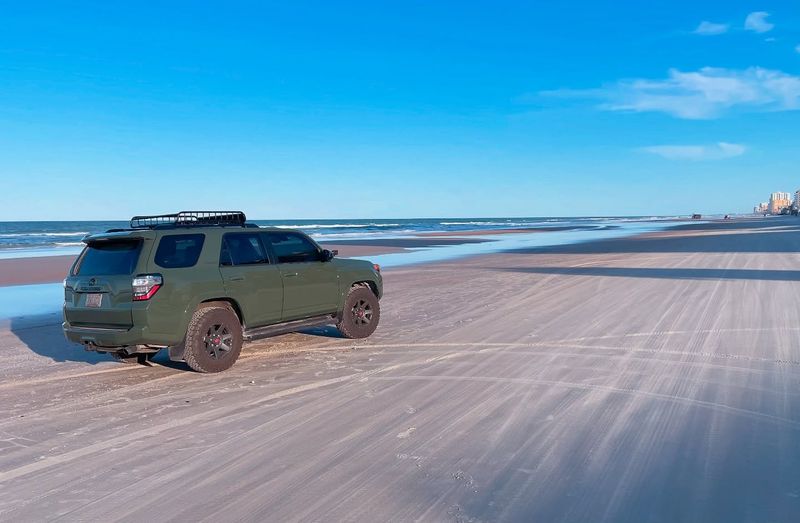
Before highways connected Florida’s coast, beaches served as roadways. This tradition continues at Daytona Beach, where you can legally drive and park directly on the hard-packed sand. The wide, flat shoreline creates natural driving lanes alongside sunbathers.
NASCAR racing actually began on this beach in the 1930s, where drivers raced partly on the sand and partly on a connecting road. Today, for a small fee, you can drive your own vehicle along a 18-mile stretch of Atlantic coastline. It’s one of the few places in America where beach driving remains legal.
11. Disappearing and Reappearing Beaches
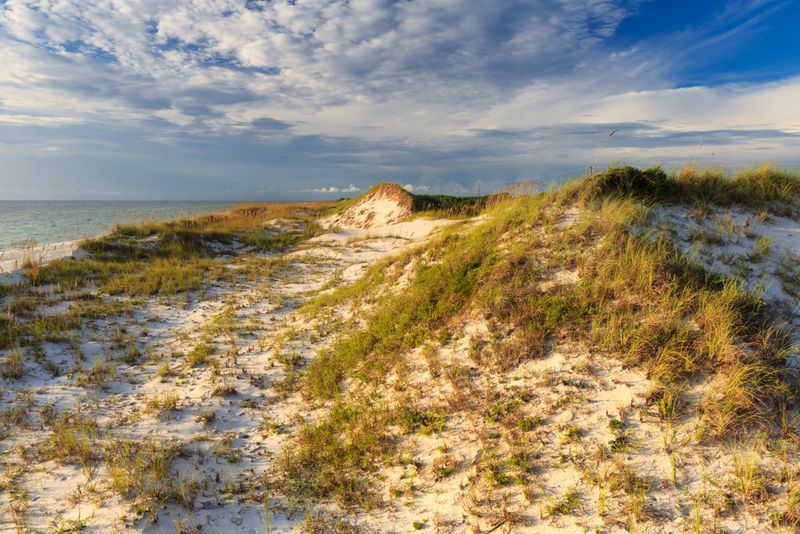
Some Florida beaches perform a disappearing act throughout the year. Cape San Blas in the Panhandle can lose over 100 feet of shoreline during winter storms, only to have it completely rebuild by summer through natural sand migration.
This dramatic seasonal transformation happens because of complex current patterns. Locals call it “beach breathing.” The phenomenon fascinated geologists so much that they established research stations to study it. For visitors, it means the beach you visited in January might look entirely different by July – wider, narrower, or with completely new sandbars.
12. Beaches With Clear Freshwater Springs

Florida sits atop one of the world’s largest aquifer systems, creating a unique phenomenon where freshwater springs bubble up directly through the sand on some beaches. At Clearwater Beach and along parts of the Gulf Coast, you can dig a shallow hole that fills with crystal-clear freshwater!
These beach springs create fascinating environments where freshwater and saltwater mix. The temperature difference is striking – the springs maintain a constant 72°F year-round. Indigenous people once relied on these natural beach wells for drinking water. Today, they’re mostly curiosities that delight children who discover them while digging in the sand.
